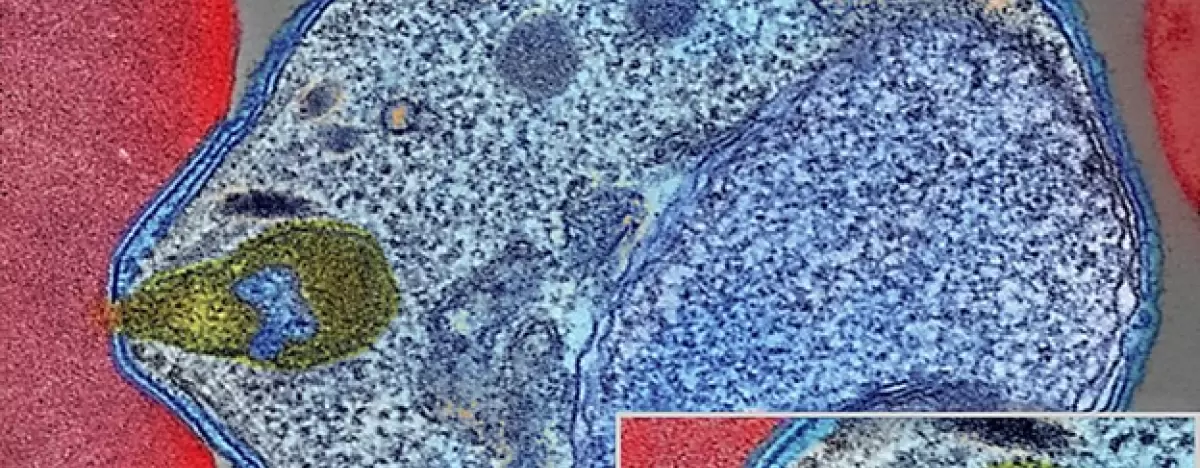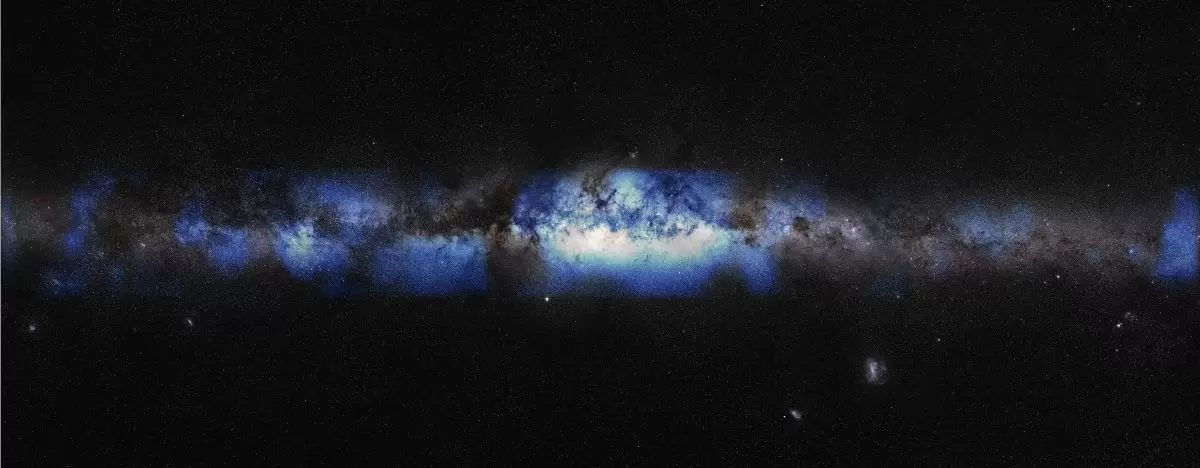ARAB KNOWLEDGE BANK PROGRAMS LATEST NEWS REGISTER BLOG MEMBER LOGIN ONE HOME ARAB KNOWLEDGE BANK PROGRAMS LATEST NEWS REGISTER BLOG MEMBER LOGIN ONE HOME Advanced electrode to help remediate stubborn new ‘forever chemicals’ As new environmental regulations are rolling out to mitigate the industry-retired long-chain chemicals known as PFAS in drinking water, there are concerns regarding a new breed of these “forever chemicals” called short-chain PFAS. PFAS is an abbreviation for perfluoroalkyl and polyfluoroalkyl substances. Researchers at the University of Illinois Urbana-Champaign are helping shift the focus to include mitigation of the chemicals, which the investigators say are just as persistent as their long-chain counterparts, more mobile and harder to remove from the environment. A study directed by chemical and biomolecular engineer Xiao Su uses electrosorption rather than filters and solvents and combines synthesis, separations testing and computer simulations to help design an electrode that can attract and capture a range of short-chain PFAS from environmental waters. The research was supported in part by the U.S. National Science Foundation through a research grant and the National Center for Supercomputing at Illinois, one of five facilities created by NSF’s Supercomputer Centers Program. A paper published in the Journal of the American Chemical Society describes how Su and team designed and synthesized a new class of copolymers that were used to prepare electrodes to selectively extract short-chain PFAS from aqueous solutions and contaminated wastewater via electrosorption. The authors showed that the bound PFAS contaminants could be released from the electrodes by applying an electric potential to achieve “nearly 100%” regeneration, which eliminates the need for the use of chemicals to regenerate the new PFAS selective electrodes. “One of the challenges of working with short-chain PFAS is that they are not well studied,” Su said. “We know that they contain fewer carbon and fluorine atoms, making them shorter molecules and, therefore, more mobile, or freer to interact within the natural environment. They are more hydrophilic, meaning they are more apt to bond with water molecules. These properties combined make them more difficult to separate from water than their long-chained counterparts.” The differences among short- and long-chain PFAS — and between long-chain PFAS in general — are significant enough for the team to rethink its previously developed electrode designed to attract, capture and destroy long-chain PFAS from the environment and drinking water sources. “The lengths of short-chain PFAS molecules vary, giving them different physical properties,” Su said. “This means we need to be able to tune the electrode just right to attract and eventually release the short-chain PFAS, with molecular-level understanding of the interactions being key to success.” Su said the work is a critical early step in removing short-chain PFAS from the environment, which have replaced long-chain PFAS in many industries.
Biological clocks of people and malaria parasites tick in tune
ARAB KNOWLEDGE BANK PROGRAMS LATEST NEWS REGISTER BLOG MEMBER LOGIN ONE HOME ARAB KNOWLEDGE BANK PROGRAMS LATEST NEWS REGISTER BLOG MEMBER LOGIN ONE HOME Biological clocks of people and malaria parasites tick in tune Health officials warn that drug resistance could wipe out recent progress against malaria, particularly in Africa and southeast Asia. Now, researchers looking for other ways to fight the mosquito-borne parasites that cause the disease have zeroed in on a potential new target: biological clocks. Most living things have internal clocks that govern fluctuations in everything from hunger and hormone levels to when genes are active throughout the day. In a study published in the journal Proceedings of the National Academy of Sciences, U.S. National Science Foundation-supported researchers analyzed gene activity in patients who showed up at medical facilities along the Thailand-Cambodia border, showing signs of a malaria infection in their blood. The team found that malaria parasites somehow sync their molecular rhythms with the internal 24-hour clocks of their hosts, their respective genes rising and falling in perfect lockstep with each other over the course of a day, like two pendulum clocks with synchronized swings. The team of researchers at Duke University, Florida Atlantic University and the Armed Forces Research Institute of Medical Sciences say the findings could pave the way to new anti-malarial drugs that throw malaria’s internal clock out of step with its host, essentially “jet-lagging” the parasites. “We have a reason to care about this,” said senior author Steve Haase at Duke. “We’re on our last line of drugs, artemisinin-based combination therapies, and we’re already seeing resistance to those in southeast Asia. Exploring some new ideas for fighting malaria makes sense.” When someone has malaria, a deadly loop repeats itself inside their body. The disease’s recurring fever spikes are caused by microscopic Plasmodium parasites that invade the person’s red blood cells, multiply and then burst out in unison, spewing into the bloodstream by the millions to invade other cells and begin the cycle anew. This cycle repeats itself every 24, 48 or 72 hours depending on the Plasmodium species. Which got scientists wondering: Could the parasites be coordinating in some way with the 24-hour circadian rhythms of their hosts? The researchers identified hundreds of genes that follow a clock-like rhythm, ramping up at certain times of day and switching off at others. Using this data, they developed a way to calculate the internal clock time for each patient and for their parasites. Then they calculated how well the rhythms of gene expression were aligned. Sure enough, for every turn of the parasite clock, the 24-hour body clock of their host went around twice. As a next step, the researchers are trying to figure out exactly how the parasite and human clocks “communicate” with each other so that their cycles line up. “There have to be some molecular signals that they’re passing back and forth to each other,” Haase said. “We don’t know what they are, but if we can disrupt them, then we might have a shot at an intervention.
First ‘ghost particle’ image of Milky Way galaxy captured by scientists
ARAB KNOWLEDGE BANK PROGRAMS LATEST NEWS REGISTER BLOG MEMBER LOGIN ONE HOME ARAB KNOWLEDGE BANK PROGRAMS LATEST NEWS REGISTER BLOG MEMBER LOGIN ONE HOME First ‘ghost particle’ image of Milky Way galaxy captured by scientists From visible starlight to radio waves, the Milky Way galaxy has long been observed through the various frequencies of electromagnetic radiation it emits. Scientists have now revealed a uniquely different image of our galaxy by determining the galactic origin of thousands of neutrinos — invisible “ghost particles” which exist in great quantities but normally pass straight through Earth undetected. The neutrino-based image of the Milky Way is the first of its kind: a galactic portrait made with particles of matter rather than electromagnetic energy. The breakthrough was achieved by a collaboration of researchers using the U.S. National Science Foundation-supported IceCube Neutrino Observatory at NSF’s Amundsen–Scott South Pole Station in Antarctica. The immense observatory detects the subtle signs of high-energy neutrinos from space by using thousands of networked sensors buried deep within a cubic kilometer of clear, pristine ice. The results were revealed at an event at Drexel University and published in the journal Science. “I remember saying, ‘At this point in human history, we’re the first ones to see our galaxy in anything other than light,’” says Drexel University physicist Naoko Kurahashi Neilson of the moment she and two doctoral students, Steve Sclafani with Drexel and Mirco Hünnefeld with TU Dortmund University in Germany, first examined the image. Kurahashi Neilson proposed the innovative computational analysis used to generate the image and received funding to pursue her idea through a grant from NSF’s Faculty Early Career Development program.
Bio-inspired device captures images by mimicking human eye
ARAB KNOWLEDGE BANK PROGRAMS LATEST NEWS REGISTER BLOG MEMBER LOGIN ONE HOME ARAB KNOWLEDGE BANK PROGRAMS LATEST NEWS REGISTER BLOG MEMBER LOGIN ONE HOME Bio-inspired device captures images by mimicking human eye Drawing inspiration from nature, Penn State scientists have developed a new device that produces images by mimicking the red, green and blue photoreceptors and the neural network found in human eyes. The research findings, reported in Science Advances, are fundamental breakthroughs in realizing perovskite narrowband photodetection devices — from materials synthesis to device design to systems innovation. The research was supported by seven grants from the U.S. National Science Foundation, listed at the end of this article. “We borrowed a design from nature — our retinas contain cone cells that are sensitive to red, green and blue light and a neural network that starts processing what we are seeing even before the information is transmitted to our brain,” said Penn State researcher Kai Wang. To achieve this in an artificial device, the scientists created a new sensor array from narrowband perovskite photodetectors, which mimic our cone cells, and connected it to a neuromorphic algorithm, which mimics our neural network, to process the information and produce high-fidelity images. Photodetectors convert light energy into electrical signals and are essential for cameras and many other optical technologies. Narrowband photodetectors can focus on individual parts of the light spectrum, such as the reds, greens and blues that make up visible light, the scientists said. “In this work, we found a novel way to design perovskite material that is sensitive to only one wavelength of light,” Wang said. “We created three different perovskite materials, and they are designed in a way that they can only be sensitive to red, green or blue colors.” The new technology may represent a way around using filters found in modern cameras that lower resolution and increase cost and manufacturing complexity. Because the researchers used perovskite materials, the new devices generate power as they absorb light, potentially opening the door to battery-free camera technology. “The device structure is similar to solar cells that use light to generate electricity,” said Luyao Zheng, a researcher at Penn State. “Once you shine a light on it, it will generate a current. So, like our eyes, we don’t need to apply energy to capture this information from light.” This research could trigger further developments in artificial retina biotechnology. Devices based on this technology could someday replace dead or damaged cells in the eyes to restore vision, according to the scientists. Because the algorithm mimics the neural network in human retinas, the findings could provide new insights into the importance of these neural networks to vision. NSF supported the research through these grants: Directorate for Computer and Information Science and Engineering 1718474; Office of International Science and Engineering 1829573; Directorate for STEM Education 1723687, 1821766, 2113839.
Gravitational waves from colossal black holes found using ‘cosmic clocks’
ARAB KNOWLEDGE BANK PROGRAMS LATEST NEWS REGISTER BLOG MEMBER LOGIN ONE HOME ARAB KNOWLEDGE BANK PROGRAMS LATEST NEWS REGISTER BLOG MEMBER LOGIN ONE HOME Gravitational waves from colossal black holes found using ‘cosmic clocks’ You can’t see or feel it, but everything around you — including your own body — is slowly shrinking and expanding. It’s the weird, spacetime-warping effect of gravitational waves passing through our galaxy, according to a new study by a team of researchers with the U.S. National Science Foundation’s NANOGrav Physics Frontiers Center. The findings published today in The Astrophysical Journal Letters are from the North American Nanohertz Observatory for Gravitational Waves (NANOGrav), a collaborative team of researchers from more than 50 institutions in the U.S. and abroad. The team conducted an analysis of burned-out stars known as millisecond pulsars, which rotate hundreds of times per second and emit radio pulses like ticks from highly accurate cosmic clocks. The team discovered what appeared to be variations in the “ticking rate” of such pulsars by comparing observations of more than 60 pulsars within radio telescope data spanning 15 years. Their analysis provides evidence that the variations are caused by low-frequency gravitational waves which are distorting the fabric of physical reality known as spacetime. According to the NANOGrav team’s findings, the spatial distortion from the gravitational waves creates the appearance that the pulsars’ radio-signal ticking rates are changing. But really, it’s the stretching and squeezing of space between Earth and the pulsars which causes their radio pulses to arrive at Earth billionths of seconds earlier or later than expected. The results are the first evidence of the gravitational wave background — a sort of soup of spacetime distortions pervading the entire universe and long predicted to exist by scientists. “The NSF NANOGrav team created, in essence, a galaxy-wide detector revealing the gravitational waves that permeate our universe,” said NSF Director Sethuraman Panchanathan. “The collaboration involving research institutions across the U.S. shows that world-class scientific innovation can, should and does reach every part of our nation.” The Cosmic Symphony of Gravitational Waves Play Video Gravitational waves were first predicted by Albert Einstein in 1916. They would not be confirmed until 2015, when the Laser Interferometer Gravitational-Wave Observatory (LIGO) detected spacetime ripples passing through the Earth. Although the source of those gravitational ripples was a collision of two far-off black holes, the resulting spatial distortion that LIGO detected was smaller than the nucleus of an atom. By comparison, the apparent pulsar time shift measured by the NANOGrav team is a few hundred billionths of a second and represents a flexing of spacetime between Earth and the pulsars about the length of a football field. Those spacetime distortions were caused by gravitational waves so immense that the distance between two crests is 2-10 light-years, or about 9-90 trillion kilometers. “These are by far the most powerful gravitational waves known to exist,” said West Virginia University astrophysicist Maura McLaughlin, co-director of the NANOgrav Physics Frontiers Center. “Detecting such gargantuan gravitational waves requires a similarly massive detector, and patience.” Using 15 years of astronomical data recorded by radio telescopes at NSF-supported observatories — including Green Bank Observatory in West Virginia, the Very Large Array in Socorro, New Mexico, and Arecibo Observatory in Puerto Rico— the NANOGrav team created a “detector” of 67 pulsars distributed all across the sky and compared the ticking rate of pairs of those pulsars. Through a sophisticated data analysis, they deduced the presence of the gravitational wave background causing the distortion of space, and thus explained the apparent timing changes of the pulsars. This is the first evidence for gravitational waves at these low frequencies,” said Vanderbilt University astrophysicist Stephen Taylor, chair of the NANOGrav collaboration and co-leader of the research effort. “The likely source of these waves are distant pairs of close-orbiting, ultra-massive black holes.” Members of the NANOGrav team with NSF’s Robert C. Byrd Green Bank Telescope in West Virginia in the background. Credit: Tonia Klein/NSF NANOGrav Physics Frontiers Center “There is so much we have yet to understand about the physical nature of the universe and that’s why the National Science Foundation supports daring team efforts like NANOGrav — to expand our knowledge for the benefit of society,” said NSF Assistant Director for Mathematical and Physical Sciences Sean L. Jones. The team’s results are providing new insights into how galaxies evolve and how supermassive black holes grow and merge. The widespread spacetime distortion revealed in their findings implies that extremely massive pairs of black holes may be similarly widespread across the universe, numbering perhaps in the hundreds of thousands or even millions. Eventually, the NANOGrav team expects to be able to identify specific supermassive black hole pairs by tracing the gravitational waves they emit. They may even uncover traces of gravitational waves from the very early universe. “While our early data told us that we were hearing something, we now know that it’s the music of the gravitational universe,” said NANOGrav co-director and Oregon State University astrophysicist Xavier Siemens. “As we keep listening, individual instruments will come to the fore in this cosmic orchestra.”





